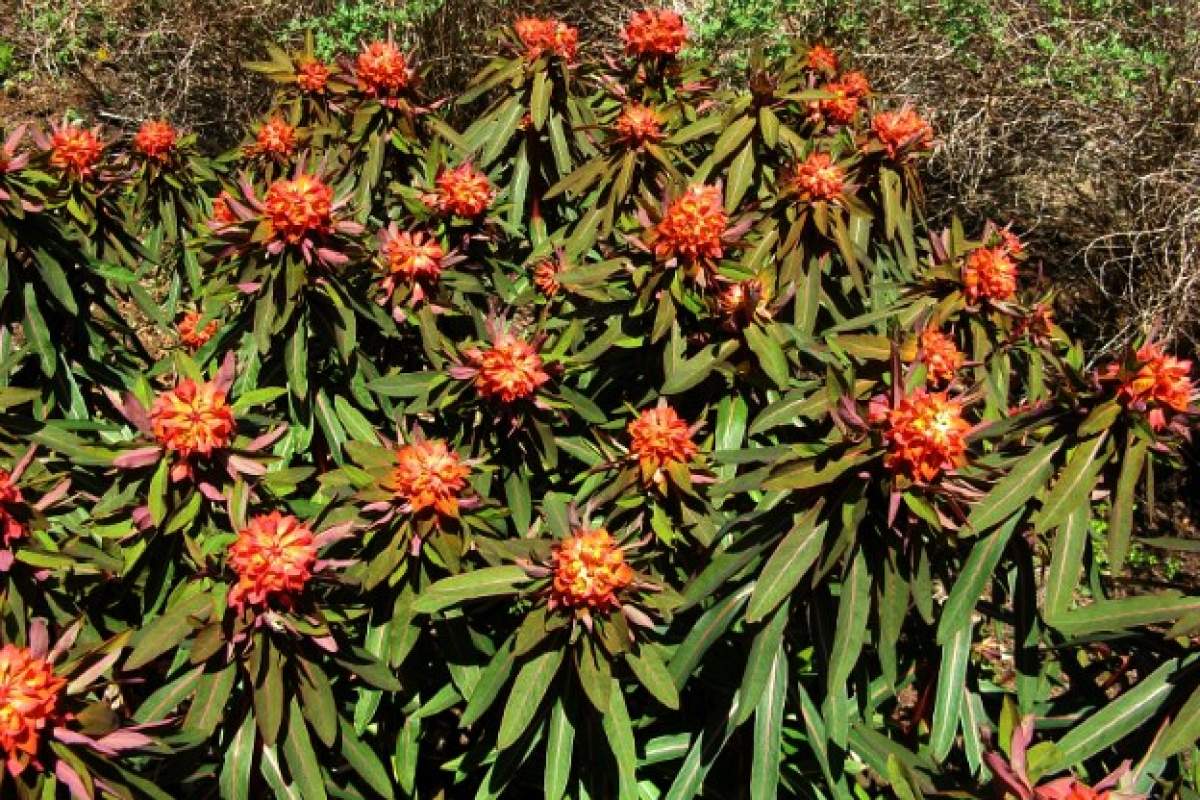
Euphorbia, commonly referred to as spurge, has a milky sap that can cause skin irritation.
There are over two thousand species of annuals, biennials, perennials, subshrubs and trees in the euphorbia genus.
The best known plants in this genus are poinsettias that have colorful red leaves and insignificant small flowers. But all euphorbias have very small clusters of flowers. In fact, all have colorful petal-type bracts that are sometimes mistaken for the flowers.
In cold climates, poinsettias are raised in greenhouses, and plant breeders have done wondrous things to make them especially attractive and colorful. Outdoors in warm climates they often grow quite tall and rangy, and the blooms are not nearly as well formed as the greenhouse varieties. They are native to Mexico and are named after Joel Poinsett, an American Ambassador to Mexico, who first brought them to the United States.
Perennial euphorbias enjoy sites in full or part sun and well- drained soil. Cut off the flowers after all types of euphorbias have bloomed, as they are vigorous self- sowers. Griffith's spurge is a 2 to 3 foot tall shrub with leaves that turn red in the fall in zones 4 through 8, and it is worth growing.
Gardeners are becoming more interested in the euphorbia species in recent years as deer usually avoid all of them, and they are remarkably drought tolerant, which gives them two attractive attributes.









